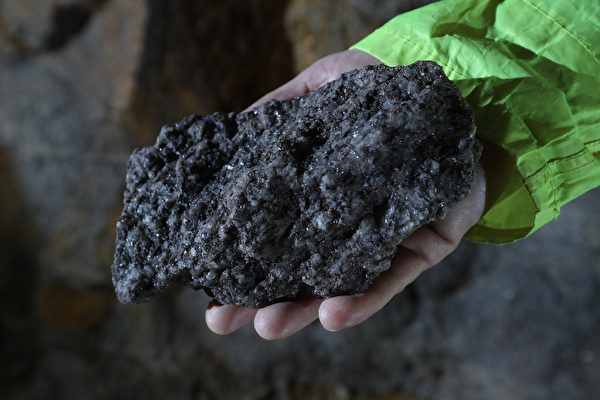As Western countries strive to break free from China’s control over critical mineral supplies, South Korean mining operators announced on Wednesday (August 28) that US government researchers recently visited the Sangdong mine in South Korea to assess progress in increasing the supply of tungsten, an important metal, from areas outside of China.
The Sangdong tungsten mine, owned by a subsidiary of Canadian company Almonty Industries, is set to resume operations this year. With China dominating over 80% of the metal supply chain, Almonty has stated that the mine has the potential to provide half of the global tungsten supply from outside China.
Tungsten is a highly durable metal used in the manufacturing of weapons, semiconductors, and industrial cutting tools.
According to the latest annual report from the US Geological Survey, the US has ceased commercial tungsten mining activities since 2015.
The report mentioned that four mineral resource scholars from the US, led by Sean Xun, Assistant Director of the National Mineral Information Center, visited the Sangdong mining area. The US Geological Survey is set to provide a “significant update” on the assessment of the mine in its 2025 report, expected to be released in the first three months of next year.
Due to oversupply and low market prices in the past, the Sangdong tungsten mine was officially closed in 1994. Now, South Korea is actively working to restart this tungsten mine located 180 kilometers southeast of Seoul in order to break Beijing’s dominance in critical minerals and reduce dependency on China. Almonty Korea Tungsten has stated that at least $125 million will be invested in the restart efforts.
As part of broader efforts to strengthen national security, the Biden administration has identified a list of critical minerals and announced tariffs on tungsten and other minerals.
According to data from the US Geological Survey, “of the 35 mineral commodities identified as critical by the Interior Department, the US was completely reliant on imports for 13 in 2019.”
CNBC reported that over the past year and a half, China has begun to exert its influence in parts of the global critical mineral supply chain to control mineral exports. New regulations aimed at restricting exports of metals like antimony are expected to lead to stricter export controls on tungsten by China.
Gabriel Wildau, Managing Director at consulting firm Teneo, stated in a report on Tuesday that in response to Beijing’s planned weaponization of critical minerals, Western countries are expected to accelerate actions to reduce dependency on China. He mentioned that the US Department of Energy has allocated $151 million in grants to encourage domestic mining and processing of critical minerals.
Reuters reported in May 2022 that over the past four years, at least 30 significant mines or processing facilities outside of China have started operation or reopened, with Sangdong being one of them. These projects include lithium mines in Australia, rare earth mines in the US, and reopened tungsten mines in the UK.
Just as the US is increasingly aware of China’s control over almost all raw materials, two new developments in Europe are poised to change the game: Norway discovered one of Europe’s largest rare earth deposits, and a company under European Lithium acquired the world’s largest important metal deposit found in Greenland.
In mid-June, Norwegian mining company Rare Earths Norway discovered one of Europe’s largest rare earth element deposits in the Fen Carbonatite Complex in the southern part of the country. The Norwegian Parliament has passed a vote to approve deep-sea mining of rare minerals in the remote northern waters of the country, making Norway the first European nation to allow such seabed mining activities.
Meanwhile, Critical Metals Corp, a subsidiary of European Lithium, announced on June 10 that it has reached an agreement to acquire the Tanbreez, the world’s largest rare earth deposit discovered in Greenland.
Tanbreez is estimated to have over 28 million tons of total rare earth oxide, with nearly 30% consisting of highly sought-after “heavy” rare earth elements (HREE).
Critical Metals Corp expects that once operations begin, the mine will supply minerals to Europe and North America.

